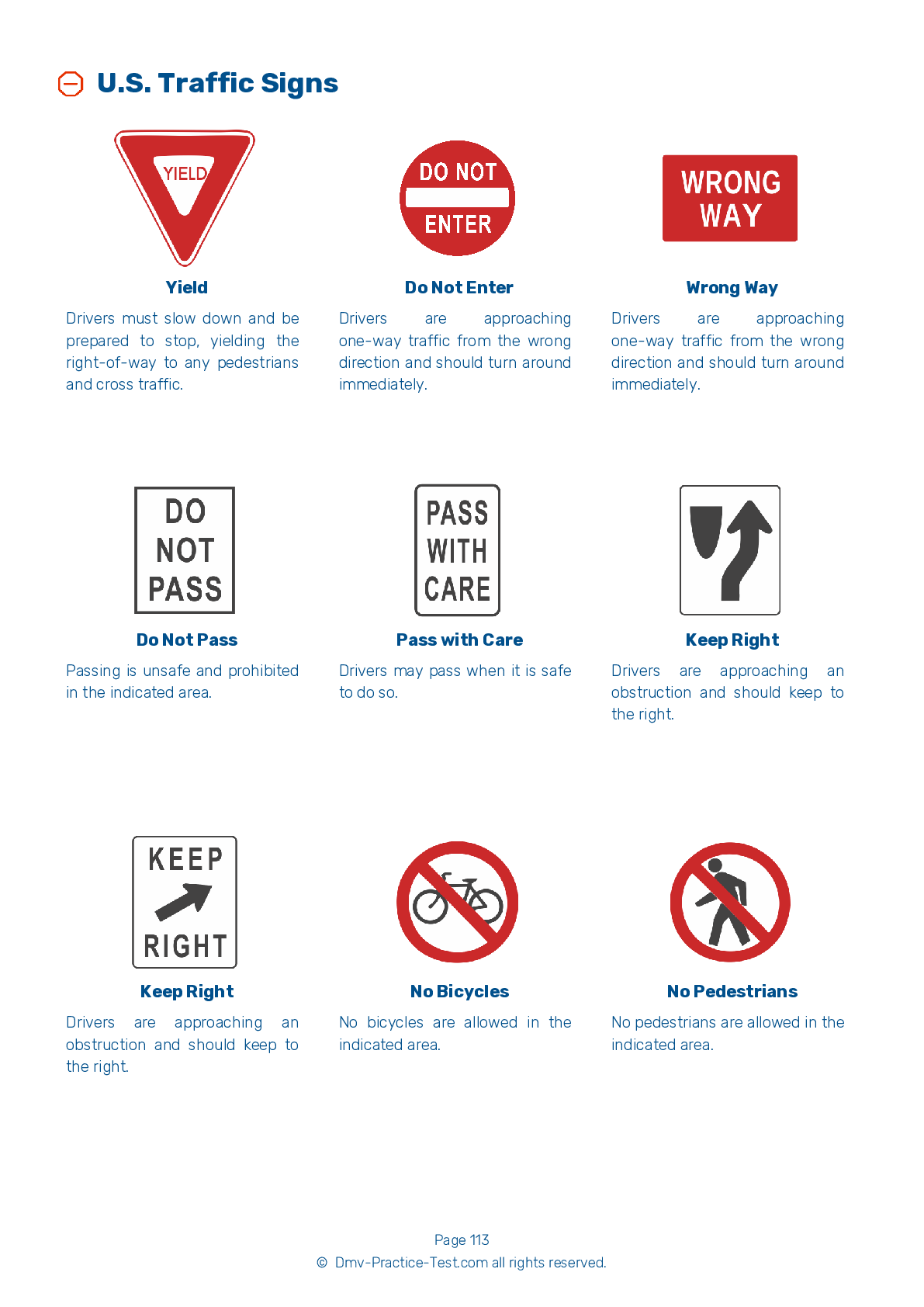Air Brakes #1
Air Brakes Endorsement Test | North Carolina 2025 #1 Page 3 of 4
Train for FREE online with our North Carolina CDL air brake test. The official exam test consists of several obligatory parts, with all of them checking your knowledge of different blocks of road rules. If you need to obtain a NC Class A/Class B driver license in 2025, practice as much as possible. Free sample tests published on our website will help you check and improve your knowledge and boost your grades. Please bear in mind that the requirements for CDL may vary from state to state.
25
20
20
13 . Vehicles equipped with Anti-Lock Braking Systems (ABS) have ____ malfunction lamps to indicate when the ABS is not working.
Vehicles with ABS have yellow malfunction lamps to alert drivers when the braking systems are not working. Be sure you know where the malfunction lamp on your vehicle is before beginning a trip.
14 . Before starting down a hill, be sure to:
Switch into a low gear.
Before starting down a hill, be sure to switch into a low gear. Gravity will increase your vehicle's speed as you travel downhill.
15 . The air pressure in a dual air brake system should build from 85 to 100 psi within:
45 seconds.
When inspecting a vehicle with a dual air brake system, you should wait for air pressure to build from 85 to 100 psi in both the primary and secondary systems. This should take about 45 seconds.
16 . During an applied leakage test, the maximum leakage rate for a double combination vehicle is:
4 psi in a minute.
It is important to know the maximum air loss rate that is safe for your specific vehicle. A double combination vehicle should have a leakage rate no higher than 4 psi in a minute during an applied leakage test.
17 . Where is the safety relief valve usually located?
On the dashboard
An air brake system's safety relief valve is located in the tank that is first to receive air from the compressor.
18 . If the safety relief valve in the air brake system releases air:
An air brake system has a safety relief valve, which releases air from the tanks if the pressure gets too high. If the valve must operate, something in the system is wrong and should be addressed by a mechanic.
2025 North Carolina | Frequently Asked Questions
A CDL Class A license in North Carolina allows the holder to operate any combination of vehicles with a Gross Combination Weight Rating (GCWR) of 26,001 or more pounds, given the Gross Vehicle Weight Rating (GVWR) of the vehicle(s) being towed is over 10,000 pounds. This category typically includes tractor-trailers and truck and trailer combinations.
A Class A CDL (Commercial Driver's License) in North Carolina allows the holder to operate any combination of vehicles with a Gross Vehicle Weight Rating (GVWR) of 26,001 pounds or more, provided the GVWR of the vehicle(s) being towed exceeds 10,000 pounds. This typically includes tractor-trailers, truck and trailer combinations, tank vehicles, and livestock carriers.
To obtain a Class A CDL in North Carolina, you must be at least 18 years old (21 for interstate driving), have a valid North Carolina driver's license, pass a vision test, and obtain a commercial learner's permit by passing written knowledge tests. You'll also need to pass a skills test which includes a pre-trip vehicle inspection, a basic controls test, and a road test.
In North Carolina, you must be at least 18 years old to qualify for a Class A CDL license for intrastate driving (within the state). However, you need to be at least 21 years old if you plan to drive commercially across state lines (interstate driving) or carry hazardous materials.
Specific endorsements aren't required for a Class A CDL license, but they can provide additional driving privileges. For example, endorsements are available for double/triple trailers, tanker vehicles, passenger vehicles, and hazardous materials. Each endorsement requires passing a separate knowledge test and, in some cases, a skills test.
The Class A CDL skills test in North Carolina encompasses three main components: a pre-trip vehicle inspection to assess your ability to determine whether your vehicle is safe for the road, a basic controls test to evaluate your basic maneuvering skills, and a road test to validate your on-road driving ability, including left and right turns, intersections, railway crossings, and various types of roadways.
Yes, Class A CDL license holders in North Carolina may face limitations. These can include restrictions based on medical conditions, such as hearing or vision impairments, or restrictions to operating only automatic transmission vehicles. Additionally, drivers under the age of 21 are restricted to intrastate driving (within North Carolina) only.
In North Carolina, the written Class A CDL test is primarily administered in English, following federal regulations. However, accommodations may be made for applicants with limited English proficiency. It's recommended to contact the North Carolina Division of Motor Vehicles directly to inquire about any available language assistance or resources.
Yes, you can request accommodations for the Class A CDL written test in North Carolina if you have a disability. The North Carolina DMV complies with the Americans with Disabilities Act and offers reasonable accommodations to help individuals with disabilities. You should contact your local DMV office in advance to discuss your needs and arrange appropriate accommodations.
Yes, you can retake the Class A CDL written test in North Carolina if you fail on your first attempt. However, you must wait at least one day before attempting the test again. If you fail three times, you'll need to wait at least 60 days before retesting. Remember, each attempt may require a new testing fee.



